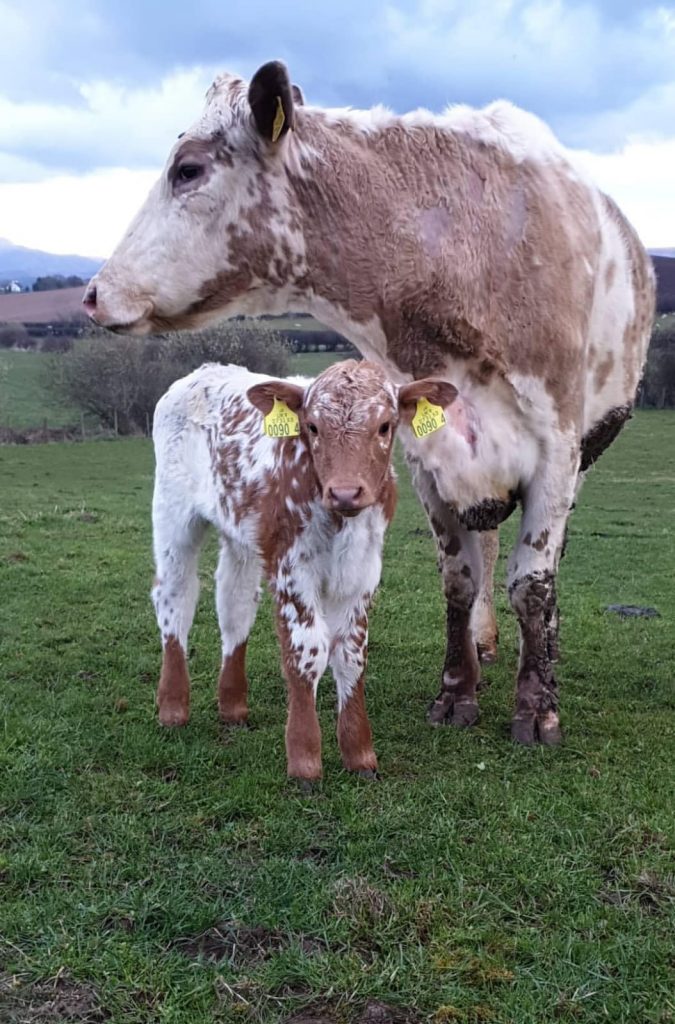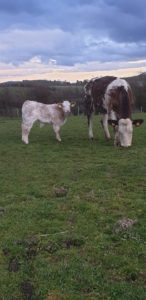Preparing livestock for turnout
April 20, 2020
Noel McNeill, CAFRE, Beef and Sheep Adviser, Newry
We are now seeing better spring weather with soil temperatures increasing and grass growth improving. This grass growth will allow cows to be turned out with their calves if sufficient covers are available.
Before cows go out a few management points should be considered to help ensure a successful turnout.
Grass Tetany
Hypomagnesemia (grass tetany or staggers) can be a problem in suckler cows in early spring as demand for magnesium (Mg) in cows producing milk for newly born calves will be high. Most of this increased magnesium requirement must come through the diet as magnesium stored by the animal is released slowly.
The most obvious symptom of tetany are muscle twitching, staggering, animal collapsed and lying flat on the ground with its head thrown back. Not all cows will display these symptoms before collapse and death. Grass tetany is very dangerous and can be fatal. Calling a vet as soon as it is suspected is absolutely essential.
As the cows need for magnesium is increased any decrease in intake can lead to grass tetany.

Factors influencing reducing Mg uptake include:
- Changeable spring weather, particularly cold wet spells, reducing intake while at the same time increasing energy demand.
- Rapidly growing lush swards which have received high levels of nitrogen (N) fertiliser are lower in fibre, resulting in faster rate of passage through the gut, reducing the time for Mg uptake.
- High levels of potassium (K) in the sward can reduce the availability of Mg in the grass.
- As the spring breeding season begins and cows begin showing signs of oestrus increased activity coupled with lower intakes during the oestrus period will increase the risk of grass tetany.
There are a number of actions that can be taken to increase the intake of magnesium and strategies to decrease the risk. They include:
- Do not put on too much nitrogen in one application for grazing fields.
- Split applications of K over the grazing season. This will decrease the chance of locking up the Mg in the grass, and in turn lower the risk of grass tetany.
- Avoid grazing fields that have been fertilised for silage or any pasture that received high amounts of K fertiliser.
- Giving free access to Mg minerals. This can be via licks or dusting of paddocks with a magnesium based powder pre grazing. Licks are a good source of Mg but there is still a risk some cows will not avail of these.
- Use pre or post calving boluses, taking veterinary and manufacturer advice on timing of administration.
- Buffer feeding hay or straw when on fresh pastures will increase fibre content of diet to slow rumen passage of nutrients in the grass. There is, however, still a risk of cows not eating this fibre. There is many other ways which magnesium intake can be increased and the risk of grass tetany can be reduced. However even with all of these put into practice there is still always a chance cows can be susceptible during high periods of stress and changing conditions. If a cow does exhibit signs of grass tetany it is important to contact your veterinary surgeon for help as soon as possible.
Calf Health
As we see the better weather conditions calves will be turned out a lot earlier, this is good practice as it lowers the risk of contracting disease in the calving pens. However calves should still be checked as regularly as possible, and at least twice daily, for signs of scours, joint ill and pneumonia. This regular checking will allow for early detection and early treatment. The earliest possible intervention will increase the chances of a successful treatment.
Calves should be tagged as soon as possible after birth to allow early detection and removal of BVD positive Permanently Infected (PI) calves.
Colostrum intake is the foundation for healthy calves. Keep a very close watch on calves that have been slow to suckle. Consult your vet and follow your animal health plan for timing of vaccination for pneumonia and clostridial diseases, and deliver these vaccinations as soon as possible.
Cow and bull health

Cows should receive their BVD booster vaccine at least one month before the breeding season commences, cows can also receive their leptospirosis vaccine at the same time. If heifers are being kept for breeding they will need a two dose programme three to six weeks apart, with the second shot administered well in advance of the start of breeding. If more than one bull is being used on the farm it is a good time to split cows into their relevant breeding groups which will reduce the need for any more stress further into the season.
Bulls will soon be called back into service. It is important at this time to give your bull a good check over. Pay particular attention to the bull’s feet. A lame bull during the breeding season can have detrimental effects on conception rates and calving spread, both of which will impact profit next year. Bulls must be in good condition when introduced to the cows as they will lose condition during the breeding season.
Spring time and cattle going to grass will be a relief for farmers with labour reducing as we start to come to the end of the spring calving period. However it is not a time to be complacent. Cows and calves should be regularly checked, and health and feeding plans kept up to date to increase the likelihood of a stress free turnout and to keep animals healthy and productive.
Caption for photos: Plan to get freshly calved cows out to grass as soon as possible now that the weather and ground conditions have improved.
